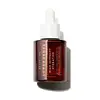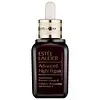What's inside
What's inside
 Key Ingredients
Key Ingredients

 Benefits
Benefits

 Concerns
Concerns

 Ingredients Side-by-side
Ingredients Side-by-side

Water
Skin ConditioningGlycerin
HumectantGlycereth-26
HumectantTrehalose
HumectantSaccharide Isomerate
HumectantMethyl Gluceth-20
HumectantAlcohol Denat.
AntimicrobialDiglycerin
HumectantHydroxyacetophenone
Antioxidant1,2-Hexanediol
Skin ConditioningCaprylyl Glycol
EmollientAvena Strigosa Seed Extract
Skin ConditioningLecithin
EmollientXanthan Gum
EmulsifyingSodium Hyaluronate
HumectantCitric Acid
BufferingSodium Citrate
BufferingSodium Surfactin
CleansingPotassium Sorbate
PreservativeSodium Hydroxide
BufferingOpuntia Ficus-Indica Stem Extract
Skin ConditioningOpuntia Ficus-Indica Callus Culture Extract
AntioxidantWater, Glycerin, Glycereth-26, Trehalose, Saccharide Isomerate, Methyl Gluceth-20, Alcohol Denat., Diglycerin, Hydroxyacetophenone, 1,2-Hexanediol, Caprylyl Glycol, Avena Strigosa Seed Extract, Lecithin, Xanthan Gum, Sodium Hyaluronate, Citric Acid, Sodium Citrate, Sodium Surfactin, Potassium Sorbate, Sodium Hydroxide, Opuntia Ficus-Indica Stem Extract, Opuntia Ficus-Indica Callus Culture Extract
Water
Skin ConditioningBifida Ferment Lysate
Skin ConditioningMethyl Gluceth-20
HumectantPEG-75
HumectantBis-PEG-18 Methyl Ether Dimethyl Silane
EmollientButylene Glycol
HumectantPropanediol
SolventCola Acuminata Seed Extract
Skin ConditioningHydrolyzed Algin
Pantethine
EmollientCaffeine
Skin ConditioningLecithin
EmollientTripeptide-32
Skin ConditioningEthylhexylglycerin
Skin ConditioningSodium Rna
Skin ConditioningBisabolol
MaskingGlycereth-26
HumectantSqualane
EmollientSodium Hyaluronate
HumectantOleth-3 Phosphate
Caprylyl Glycol
EmollientLactobacillus Ferment
Skin ConditioningOleth-3
EmulsifyingOleth-5
EmulsifyingAnthemis Nobilis Flower Extract
MaskingYeast Extract
Skin ConditioningCholeth-24
EmulsifyingHydrogenated Lecithin
EmulsifyingCeteth-24
CleansingTocopheryl Acetate
AntioxidantEthylhexyl Methoxycinnamate
UV AbsorberHexylene Glycol
EmulsifyingCarbomer
Emulsion StabilisingTriethanolamine
BufferingTrisodium EDTA
BHT
AntioxidantXanthan Gum
EmulsifyingPhenoxyethanol
PreservativeCI 14700
Cosmetic ColorantCI 19140
Cosmetic ColorantWater, Bifida Ferment Lysate, Methyl Gluceth-20, PEG-75, Bis-PEG-18 Methyl Ether Dimethyl Silane, Butylene Glycol, Propanediol, Cola Acuminata Seed Extract, Hydrolyzed Algin, Pantethine, Caffeine, Lecithin, Tripeptide-32, Ethylhexylglycerin, Sodium Rna, Bisabolol, Glycereth-26, Squalane, Sodium Hyaluronate, Oleth-3 Phosphate, Caprylyl Glycol, Lactobacillus Ferment, Oleth-3, Oleth-5, Anthemis Nobilis Flower Extract, Yeast Extract, Choleth-24, Hydrogenated Lecithin, Ceteth-24, Tocopheryl Acetate, Ethylhexyl Methoxycinnamate, Hexylene Glycol, Carbomer, Triethanolamine, Trisodium EDTA, BHT, Xanthan Gum, Phenoxyethanol, CI 14700, CI 19140
 Reviews
Reviews

Ingredients Explained
These ingredients are found in both products.
Ingredients higher up in an ingredient list are typically present in a larger amount.
Caprylyl Glycol is a humectant and emollient, meaning it attracts and preserves moisture.
It is a common ingredient in many products, especially those designed to hydrate skin. The primary benefits are retaining moisture, skin softening, and promoting a healthy skin barrier.
Though Caprylyl Glycol is an alcohol derived from fatty acids, it is not the kind that can dry out skin.
This ingredient is also used as a preservative to extend the life of products. It has slight antimicrobial properties.
Learn more about Caprylyl GlycolGlycereth-26 is a synthetic ingredient and polyethylene glycol ether of Glycerin. Glycerin is already naturally found in your skin and helps keep your skin moisturized.
It is a humectant and helps add texture to products. It can make your product thicker.
As a humectant, it helps draw moisture from the air to your skin. This helps your skin stay hydrated.
Learn more about Glycereth-26Lecithin is a term for a group of substances found in the cell membranes of plants, animals, and humans. They are made up of mixture of phospholipids.
This ingredient has emollient and emulsifying properties.
As an emollient, lecithen helps soften the skin and creates a barrier to keep moisture in.
As an emulsifier, it also helps prevent water and oil ingredients from separating. Lecithin can also help ingredients be better absorbed by the skin.
This is because the phospholipids in lecithin produce liposomes. Liposomes help other ingredients get through the skin barrier.
Depending on the source of this ingredient, lecithin may not be fungal acne safe. This is because some sources of lecithin come from soybean oil, which may feed the malassezia yeast that feeds fungal acne.
We recommend reaching out to the brand you are purchasing from to inquire about the source of their lecithin.
Some other names for this ingredient include soy lecithin and deoiled soy lecithin.
Learn more about LecithinMethyl Gluceth-20 is a humectant. Humectants help draw moisture from the air to your skin.
It is created by combining polyethylene glycol with glucose.
Sodium Hyaluronate is hyaluronic acid's salt form. It is commonly derived from the sodium salt of hyaluronic acid.
Like hyaluronic acid, it is great at holding water and acts as a humectant. This makes it a great skin hydrating ingredient.
Sodium Hyaluronate is naturally occurring in our bodies and is mostly found in eye fluid and joints.
These are some other common types of Hyaluronic Acid:
Learn more about Sodium HyaluronateWater. It's the most common cosmetic ingredient of all. You'll usually see it at the top of ingredient lists, meaning that it makes up the largest part of the product.
So why is it so popular? Water most often acts as a solvent - this means that it helps dissolve other ingredients into the formulation.
You'll also recognize water as that liquid we all need to stay alive. If you see this, drink a glass of water. Stay hydrated!
Learn more about WaterXanthan gum is used as a stabilizer and thickener within cosmetic products. It helps give products a sticky, thick feeling - preventing them from being too runny.
On the technical side of things, xanthan gum is a polysaccharide - a combination consisting of multiple sugar molecules bonded together.
Xanthan gum is a pretty common and great ingredient. It is a natural, non-toxic, non-irritating ingredient that is also commonly used in food products.
Learn more about Xanthan Gum